Hong Kong is a city for foodies – from dai pai dongs to fine dining, there’s something to cater to every palate. It also plays host to some
curious culinary creations, but some food is riskier than others. Weird? Yes. Wonderful? We’ll let you be the judge of that. Here are five dangerous (and oftentimes unethical) delicacies and dishes that we plan on steering well clear of in the 852.
[pro_ad_display_adzone id=“73367”]
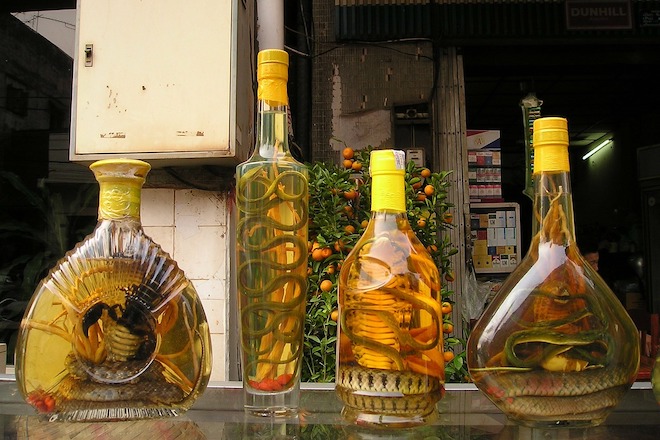
1. Snake Wine
Though not the most adventurous name, this aptly-titled liquor often sees an entire snake suspended in a bottle of rice wine. It is then left to ferment for weeks, or sometimes even months. This delicacy has been consumed for three millennia, though it has fallen out of favour with the majority of local liquor lovers. Strictly speaking, this isn’t as dangerous as it sounds, as the alcohol deactivates any venom present within the snake, but if you trade in a branded bottle for moonshine, you may be in for a nasty surprise.
[caption id="attachment_128649" align="aligncenter" width="660"]
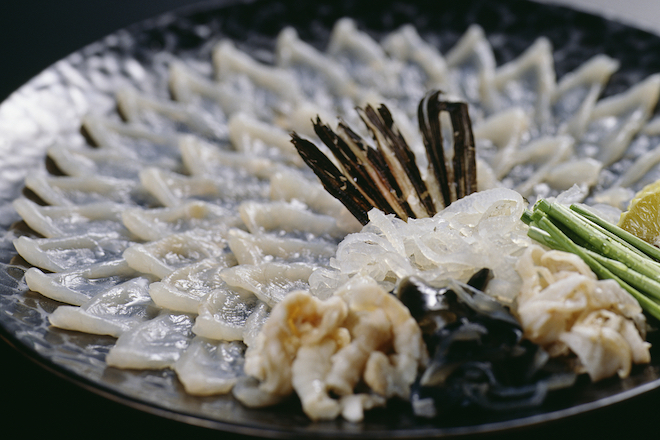
Image via Shutterstock / KPG_Payless[/caption]
2. Fugu
Pufferfish – known as fugu – is a Japanese delicacy that you don’t want a back-alley alternative for. The fish is known to contain a harmful toxin which could prove fatal if ingested – remember that episode of
The Simpsons where Homer is told that he only has 24 hours to live after eating some? To prepare fugu, chefs must train for a minimum of two years and obtain a special license granting them the rights to prepare the dish for guests. In Hong Kong, dried pufferfish can be sampled at
Inakaya, in the ICC.
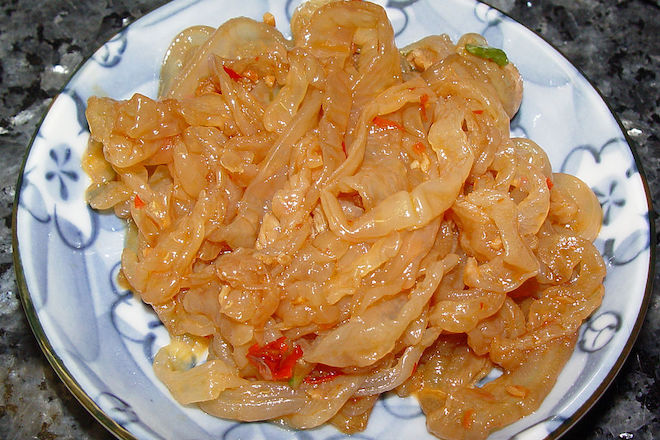
3. Jellyfish
Jellyfish may be more common as a maritime monster that wreaks havoc on unsuspecting swimmers, but certain species actually end up on the dinner table, too. Jellyfish is eaten across Asia as a snack, salad, or appetiser. Not only are they safe to consume; some even believe eating jellyfish can alleviate aching bones and tired muscles. Just don’t opt for a DIY approach or start sashimi-ing a nearby stinger.
[caption id="attachment_128652" align="aligncenter" width="660"]
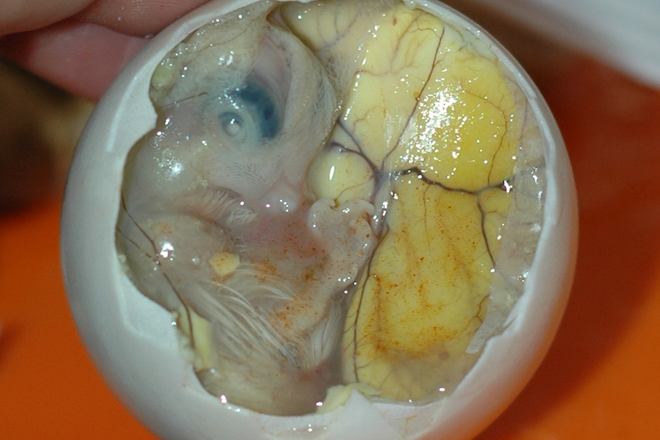
Image via Wikimedia Commons / Marshall Astor[/caption]
4. Balut
A popular dish in the Philippines, balut is not for the faint-hearted. A duck embryo is boiled and eaten whole, from the shell. It’s a controversial dish and one that turns the stomach of many a meat-eater and vegan alike, but the Filipino national delicacy also boasts a legion of local followers. Here in Hong Kong, you can find it at
Foodtrip Bedana’s in Jordan – if you dare!
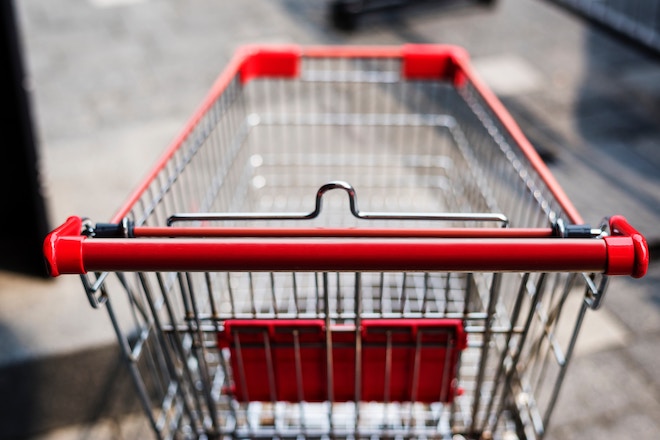
5. Home-ing in on Risky Dishes
On the rare occasion that you do manage to cook at home, you assume that you’re in safe hands because you know exactly what’s going into your meal. But do you actually? Recent health scares that have shaken the Mainland (and our wet markets and supermarkets by default) include everything from exploding watermelons to fake eggs and melamine-loaded milk. Yikes!
Read more! Explore the rest of our
Culture section on
Localiiz for more quirky Hong Kong stories.
[button color=“#008BD2” size="medium" link="https://localiiz.us4.list-manage.com/subscribe/post?u=c2964a434922598f5d8ee53ff&id=07d327a2e8" icon="" target="true"]Subscribe to receive our weekly newsletter[/button]

 Image via Shutterstock / KPG_Payless[/caption]
Image via Shutterstock / KPG_Payless[/caption]

 Image via Wikimedia Commons / Marshall Astor[/caption]
Image via Wikimedia Commons / Marshall Astor[/caption]